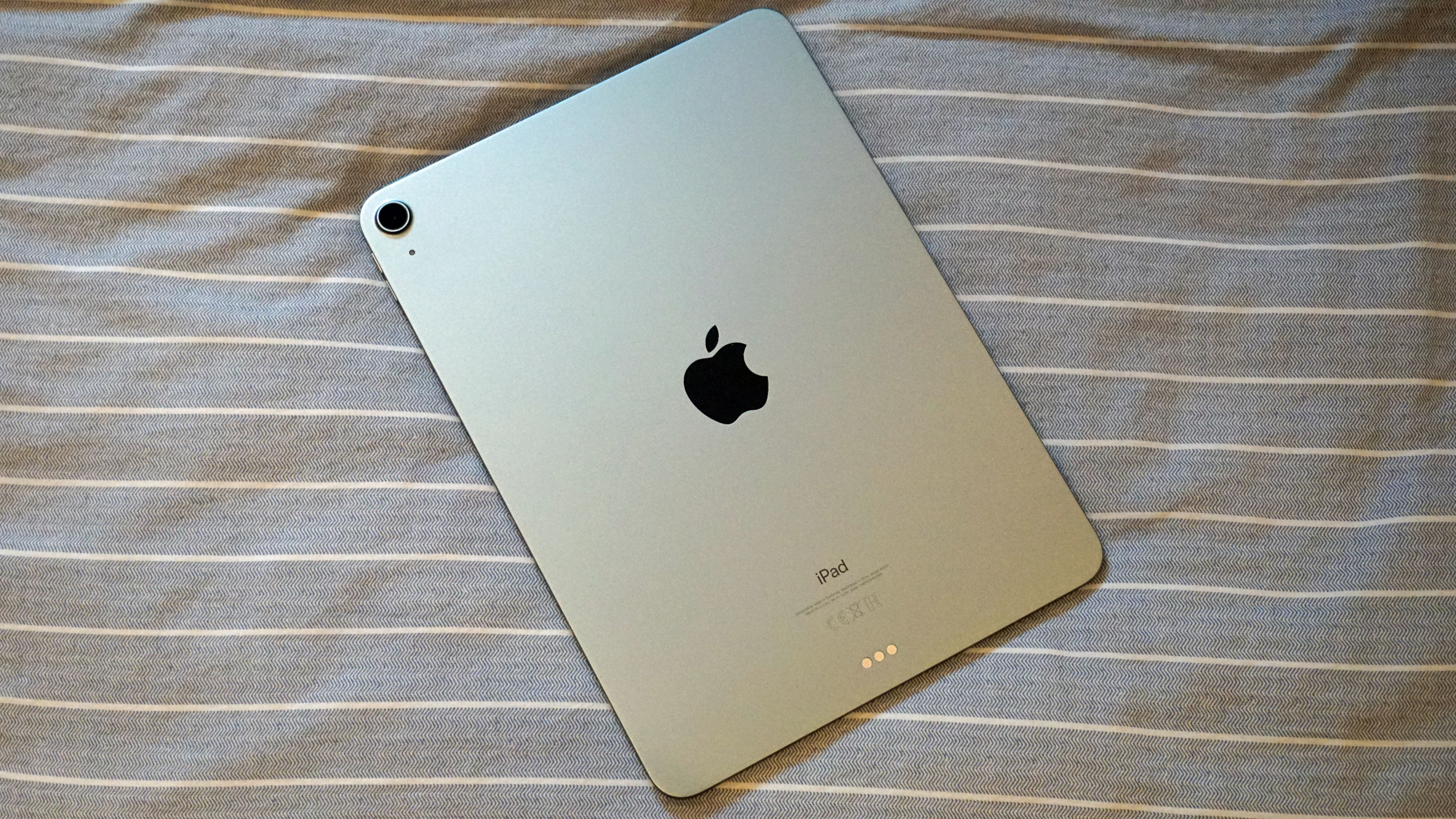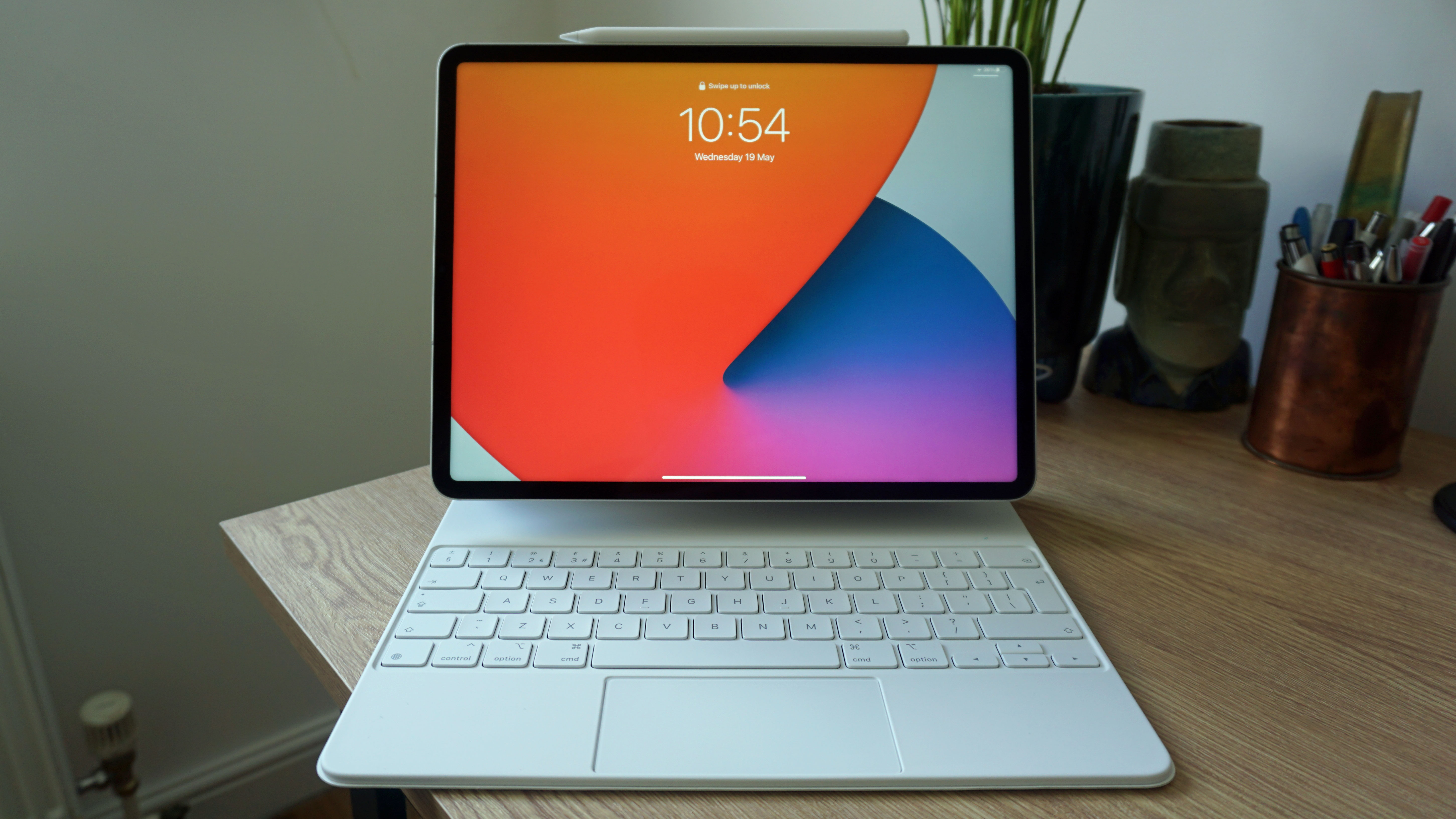I've made sure to champion second-hand products in my time at TechRadar; buying pre-loved gadgets is a great way to save money and the environment in one go. But since all the gadgets I use are review loans, I haven't actually had to buy any tech for going on four years.
However, since I'll soon be leaving TechRadar, the situation is different. I'm now at a point where I have to begin buying my own tech again. I have to spend my own money on devices that I'll own – and not having been in this position for some time makes this a very scary change indeed.
A recent purchase I've had to make is an iPad. While I'm not a huge fan of Apple products, some of the apps I use in my professional life are available only on iOS, ruling out Android tablets for working.
I've been offering up tech buying advice for years as part of the TechRadar team, but having to put my money where my mouth is has felt like a huge test of what I've written. However, having finally picked out a refurbished iPad Pro 12.9 (the 2021 model) with 256GB storage and Wi-Fi connectivity and received it last night, I feel vindicated in recommending refurbished gadgets.
Finding a tablet
Buying a new iPad was quite an intimidating proposition, because gadgets from Apple are ludicrously expensive – but I kept an open mind with regards to which device I'd buy.
That attitude lasted exactly a second, at which point I ruled out buying an iPad Mini – because who on earth would consider buying a tablet that similar in size to some Android phones? Certainly not me.
For a moment I did consider buying a new iPad (2022), upon hearing rumors of a redesign, and possibly would have gone forth with the purchase had the new generation launched alongside the iPhone 14. This didn't happen, of course, and I can't hang around waiting for the rumored October launch event. Plus, I'm not a fan of the antiquated design of the current-gen models, so the entry-level iPad line was also checked off the list.

The iPad Air became my top choice; not the iPad Air (2022), because it's quite a duff upgrade over its predecessor, but the iPad Air (2020). This tablet offers a premium design that I like, more than enough processing power, and a compact body. However, as you already know from the heading of this article, it wasn't the device I went for in the end, for one simple reason: storage. Although the iPad Air has a mid-range price, it's for a pithy 64GB storage. Opting for the next size up, at 256GB, raises the price quite significantly.
So where to next? The iPad Pro range, of course – it's the line I'm most familiar with, after all, having used every model since 2018. While the iPad Pro range is also incredibly expensive, I like the more generous sizing of the 12.9-inch model, plus there are many more storage options, too.
And, whilst shopping around, I discovered that there are plenty of options in the form of refurbished models, too. You see, while checking out prices for new iPad Pro tablets, I'd also been keeping an eye on the cost of refurbished models, from the likes of BackMarket, Amazon and Apple's own stores, taking note of the differences in cost between the two.
My research found that the iPad Pro models were available at the best prices comparing new to second-hand. In addition, there was also a greater selection of quality grades on offer; some refurbished websites let you choose the quality of device, with pristine-looking models costing more than slightly-scuffed ones.
This is the reason I ended up with an iPad Pro instead of an iPad Air, and a 12.9-inch model instead of a cheaper 11-inch device, one with 256GB of storage instead of 128GB. The generous number of refurbished models of iPad Pro on the market meant that I could effectively get more tablet for the same amount of money, which actually saved me quite a bit of money.
In the end, I saved about £250 on the iPad I picked up, compared to buying it new at launch a year ago. Given that even Black Friday often sees a reduction in price of only about £100, this felt like a significant saving, one with which I was very pleased.
Getting more than iPaid for
After clicking "Buy" on Apple's website (which, surprisingly, offered the model at a better price than Amazon or BackMarket), I immediately had doubts – I'd agreed to spend a large sum of money on a second-hand tablet that I'd never seen before. Had I made a massive mistake?

I was full of apprehension upon reaching the Apple Store, something that was made worse on entering; it felt like I was at a street bazaar. Why were there so many folk just hanging out, not really looking to buying anything at all? Why were all the employees shouting at one another across the floor? Why did all the show products look like they'd served time in a war? By trying to make its Apple Stores more like hubs where you spend time, and less like shops, Apple had made for a rather confusing visitor experience.
What caused even more confusion was that on receiving the iPad I'd ordered, it was in a box covered in plastic wrap. Had the staff member given me a brand-new tablet by accident?
But getting home, I saw that the box stated this was a refurbished product; Apple had simply gone to surprising lengths to make this refurbished tablet feel like a new one. This was evident when I opened the box, too, finding the wall plug and cable inside nicely wrapped up.
In fact, if it wasn't for the word "refurbished" on the box, no-one would ever know that this was a second-hand device – and the actual tablet is as much an indicator of this as the packaging. It was pristine, with no scuffs or marks. Even the charging port, which can quickly become scratched, looked like it had never seen a USB-C cable in its life.
Annoyingly, iPads don't come with the Battery Health feature seen on the iPhones, so I can't say for certain how well the battery will hold up. However, following my day of using this tablet, it feels identical to the brand-new test unit I'd been using for months.
I'm pleasantly surprised at just how new this "refurbished" device feels, and it has had me rethinking all of my future buying plans. Sure, Apple is a big company, and can be relied upon for having a top-notch process for refurbishing its products, but that also means that its close competitors (including Amazon's renewed service, and popular website BackMarket) likely need to keep up to speed to remain competitive.
My iPad Pro basically feels new, with the only difference being that I paid far less than I would have paid for a new model. So, if I can save a similar amount of money purchasing other products, of equal quality (something that seems like a no-brainer considering the cost of living crisis) then I don't really see the need to buy new ever again.
from TechRadar - All the latest technology news https://ift.tt/FUIZzl4
via IFTTT

No comments:
Post a Comment